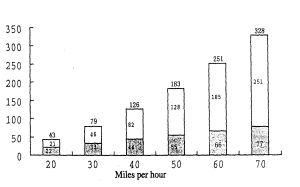C
Are you afraid of change? Whether it is you personally or the working/living environment around you that changes, change will happen, it¡¯s one guarantee I can give you and if you want success you need to make changes too.
Throughout the history of mankind changes have happened and they will continue to do so until the end of time. I do not think I need give you a list of any of these events they are obvious to us all.
Where are you going with this Steve, I hear you saying to yourself, everyone knows that changes happen all the time and we as human beings adapt accordingly. Well, yes, I agree with you to a point, but in that case why are we all not living the life we want in the world we want?
Because some of us resist change, because we are afraid of the unknown factors that change may bring into our lives.
Stop resisting and the changes will happen automatically, that is what happened to me when I started using hypnosis£¨Ë¯Ãß״̬£© and mediation £¨³Á˼£©to help me come to terms with the changes I needed to make to get out of Going Nowhere Land. I honestly believe that if I had

not lost my fear of change when I did that there is absolutely no way that I would be enjoying life and the success I am having as much as I do at this moment in time.
My intention is to carry on enjoying life to the full and to successfully help others to do the same and if that means making even more changes to my life, as it surely will, then bring them on and let¡¯s get started.
It does not matter if you start off making small changes like getting up early so that you can share breakfast with your loved ones, take some exercise or meditating before going to work, start making those changes now. By getting into the habit of making changes, you will accept change into your life, you will begin to change more of your old habits into new and better ones and even enjoy the feeling that making those changes brings and the success that comes with them.
64. Which would be the best title for the passage?
A. Are you afraid of change? B. Changing for success.
C. Why do you resist change. D. Change brings happiness.
65. The underlined phrase ¡°come to terms with¡± in the fifth paragraph probably means ¡°_______ ¡°
A. reach an agreement with B. fight against
C. accept something unpleasant D. overcome the bad consequences of
66. From the fifth paragraph we can infer that ___________.
A. the author has never been afraid of changes in his life.
B. the author used to believe that changes happened automatically
C. the author is still not satisfied with his present situation
D. the author had experienced a period of frustration(´ìÕÛ) in his life
67. In the last paragraph, the author intends to ________.
A. list the necessary changes we ought to make
B. advise us to make any necessary changes
C. explain what changes can bring
D. explain the progress of making changes

 ÌôÕ½100µ¥Ôª¼ì²âÊÔ¾íϵÁдð°¸
ÌôÕ½100µ¥Ôª¼ì²âÊÔ¾íϵÁдð°¸

 not lost my fear of change when I did that there is absolutely no way that I would be enjoying life and the success I am having as much as I do at this moment in time.
not lost my fear of change when I did that there is absolutely no way that I would be enjoying life and the success I am having as much as I do at this moment in time. ivates parts of the brain that produce happiness. In one study, older adults who listened to their choice of music during eye surgery had significantly lower heart rate and blood pressure than those who had silent surgery.
ivates parts of the brain that produce happiness. In one study, older adults who listened to their choice of music during eye surgery had significantly lower heart rate and blood pressure than those who had silent surgery. ht out an hour later can do more for your mood than any number of bubble baths or massages.
ht out an hour later can do more for your mood than any number of bubble baths or massages.